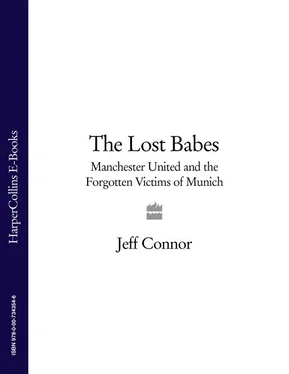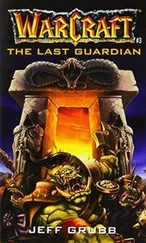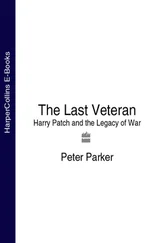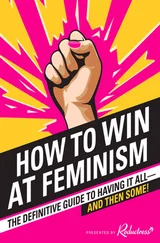Busby’s rationale owed as much to a shrewd business brain and his native frugality as a desire to mould a team of willing youngsters in his own image and free of the subversive element represented by players like Mitten and Morris. These young players’ future worth to the club could be incalculable, not only in their valued skills on the field but as a valuable asset off it. Busby reasoned that if he could sign ten young professionals on the maximum salary allowed by the League, some £8 a week, it would cost the club £3,500 a year in wages: if only one of the ten made the grade he would be worth between £15-20,000 to the club on the current market values. Good business in any currency. The other nine, if the club did not retain them, would bring back almost as much between them. It all helped defray the cost of rare forays into the transfer market.
Not surprisingly, the ruthless weeding out employed by Busby produced far more failures than successes. It was only the most gifted who survived the pruning.
The recruitment process seldom varied and was typified by United’s wooing of David Pegg, a teenage left-winger from Highfields in Doncaster. In South Yorkshire, if a schoolboy was asked what he wanted to do when he grew up the invariable answer was either ‘open the batting or bowling for Yorkshire’ or ‘become a professional footballer’. Most of them finished up following their fathers down the pits. Pegg, who had been spotted as a schoolboy, was one of the few to get away.
When he was old enough to turn professional, on his seventeenth birthday, Busby invited Pegg’s father to his office at Old Trafford. Bill Pegg, a miner for forty-eight years, was not the type to have his head turned by fancy promises and with native Yorkshire caution said: ‘I want the boy to be happy Mr Busby, but suppose it doesn’t go well for him? It’s back to the pits. Do you think he will really make the grade?’ Busby replied: ‘As long as he keeps trying. That’s all I ask of any lad.’
Discipline was important, too. ‘It’s never too early or too late to wear a tie,’ Busby scolded the seventeen-year-old Pegg, who had boarded the team bus in an open-necked shirt. They called the senior players ‘Mister’, knocked on the first-team dressing-room door before entering and this orderliness was maintained in their lives away from Old Trafford, usually in the homes of a series of kindly landladies carefully screened by the club and prepared to report back to Busby on the good behaviour, or otherwise, of their young charges.
Many of them began their new lives in Manchester in the digs of the redoubtable Mrs Watson on Talbot Road close to the county cricket ground and she kept a dozen young players under her roof at any one time. Meals were served around a communal table, some—although not all—helped with the washing up and bedrooms were shared.Mrs Watson had a black-and-white television in the lounge which added to the creature comforts and helped ward off the inevitable effects of homesickness.
The married men lived in club houses, rented for around £3 a week, and most of them within a couple of miles of the ground in the King’s Road area.
Housing was one of the few bones of contention in an invariably happy environment. Some wives would pester the club constantly about having a new fireplace built or getting a wall knocked down, the most persistent being Teresa, the wife of Bill Foulkes. A succession of club officials came to dread it when Foulkes would tell them: ‘Teresa wants to come and see you.’
Until the age of seventeen, the younger players also went through the motions of pursuing a ‘second trade’ alongside their playing careers to calm the worries of parents. Bobby Charlton, for example, worked at an engineering firm, Geoff Bent was a trainee joiner, as was Pegg. None of these vocations, it goes without saying, were pursued past the day they signed a full-time contract and became, officially, a Manchester United player.
Busby assembled his backroom staff with equal care. Murphy, the fiery Welshman, was the fulcrum of much of the success of the Busby Babes as we shall see later, but trainer Tom Curry and Bert Whalley, the coach, also played key roles.
Whalley, a former United wing-half who had joined the coaching team after his playing career ended in 1947, was third in command after Busby and Murphy and in many ways appears to have been ahead of his time in terms of the psychology of dealing with young players. A handwritten letter would be delivered to each of them every Friday with a detailed report on how he thought they had played the week before, along with a description of the team they would be playing the following day and detailed insights into the modus operandi of the man they would be marking, or vice versa.
Curry had been a wing-half with Newcastle United for eight years in the Twenties and, like a later generation, lost most of his career to a world war. A product of the South Shields junior sides, he had worked with Newcastle youngsters in the club’s North-Eastern League side and his first job as a trainer was with Carlisle United, before he arrived in Manchester in 1934. Along with his ‘deputy trainer’ Bill Inglis, he wore a white coat to work, both of them resembling rather jolly cricket umpires. While Murphy snapped and snarled, they smiled and cajoled.
‘Our whole little world revolved round Jimmy Murphy, Bert Whalley and Tom Curry,’ says Scanlon. ‘The staff made it so happy, people like the laundry ladies. The older players were more reserved but they would still join in the fun, that was the secret, although it would take nothing for someone like Jack Rowley to snap at you. You had respect for the first teamers, but the kids were really in a little world of our own.’
The Babes’ surrogate fathers forgot nothing, according to Busby’s son, Sandy: ‘Tom Curry, like Bert, was a devout churchgoer and when the team went away, he would go round the lads and find out what religion they were and one of his duties was to go and find out where their nearest church was. He’d get you up in the morning. He’d even get my dad up.’
Along with Whalley, who had been taken on the last trip as a bonus, and Walter Crickmer, who had worked so long and hard with James Gibson to resurrect Manchester United, Curry was to die at Munich.
Tom Jackson, the football writer who covered United for the Manchester Evening News , and another Munich victim, is often acknowledged as the author of the title of the Busby Babes, but the credit should really go to a young sub-editor working on the newspaper at the time. Later to become one of journalism’s great sports editors, notably with the Sun , Frank Nicklin had showed a flair for alliteration even in those days and his headline above a Manchester United match report on 24 November 1951—the day United gave first-team debuts to eighteen-year-old Jackie Blanchflower and Roger Byrne—was soon almost universally adopted. Busby himself hated the name, but soon found he had to live with it.
Byrne, who was twenty-one at the time, went on to make twenty-three more appearances in the 1951-52 championship-winning side alongside the grizzled veterans of the 1948 Wembley team, and had even scored seven goals in the last six games of the season from the left wing. But two years later the self-contained grammar school boy from Gorton found himself suddenly the head prefect in a classroom of nurslings. United’s away match at Huddersfield on 31 October 1953 is often seen as the defining moment in the history of the Babes when seven players under the age of twenty-two, including a versatile defender from Northern Ireland, a clever winger from South Yorkshire and a muscular wing-half from the English Midlands, appeared in the first team in an otherwise undistinguished 0-0 draw.
Читать дальше












